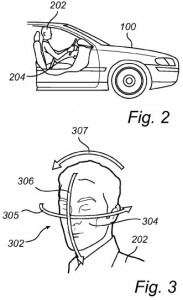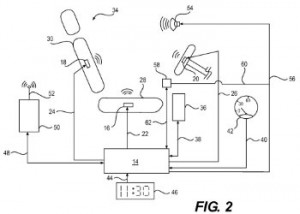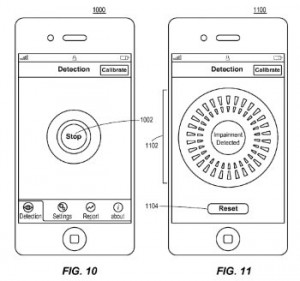 After autonomous, or “self-driving,” vehicles took the electronics industry by surprise at the 2015 Consumer Electronics Show, we’ve been doing our best here at IPWatchdog to profile the development of this industry at its earliest stages. We’ve also noticed a sizable uptick in patents issued by the U.S. Patent and Trademark Office for technologies related to autonomous cars, indicating that there are a number of companies looking to bring a product to market in this sector. Advances in the field have gotten to the point where some companies are now facing regulatory issues over the conducting of research and development in the United States.
After autonomous, or “self-driving,” vehicles took the electronics industry by surprise at the 2015 Consumer Electronics Show, we’ve been doing our best here at IPWatchdog to profile the development of this industry at its earliest stages. We’ve also noticed a sizable uptick in patents issued by the U.S. Patent and Trademark Office for technologies related to autonomous cars, indicating that there are a number of companies looking to bring a product to market in this sector. Advances in the field have gotten to the point where some companies are now facing regulatory issues over the conducting of research and development in the United States.
We’ve tended to focus on the convenience of autonomous vehicles in our reporting this year. For many people, an extra hour to focus on work or personal matters during their daily commute would be life-changing enough. Today, however, we want to consider the potentially life-saving aspects of autonomous vehicles and how much safer American roads and highways could be once self-driving cars are fully developed.
During 2012, a total of 3,328 people in America lost their lives in automobile accidents that involved a distracted driver, according to statistics reported by the Centers for Disease Control and Prevention. Thankfully, those numbers were less than the number of distracted driving fatalities suffered during 2011 (3,360 deaths). The number of injuries sustained in distracted driving crashes is both astonishing and rising. In 2011, 387,000 people were injured in these incidents. In 2012, that number rose by 9 percent to approximately 421,000 people. That’s equivalent to more than five NFL stadiums packed to capacity.
Yet this is still a far cry from how much distracted driving actually happens on American roads. Estimates from the National Highway Traffic Safety Administration (NHTSA) indicate that, during the daytime hours, there are more than 800,000 cars being operated by a driver using a hand-held cell phone at any given time. That’s an astonishing piece of information that requires us to ask whether taking the human driver out of the entire transportation equation wouldn’t end up benefitting everyone.
The NHTSA recognizes three distinct types of distraction related to distracted driving incidents. Visual distraction occurs when a driver takes his or her eyes off of the road. Manual distraction involves a driver letting go of the wheel with either hand. Cognitive distraction occurs when a driver’s mind is no longer focused on driving, whether or not the road is still in view. Any one of these modes of distraction increases a driver’s risk of crashing a car. It’s easy to see how sending a text or e-mail through a smartphone engages a driver on all three types of distraction.
Distracted driving is a huge problem on American roads, contributing to 16 percent of all motor vehicle crashes that happened in the U.S. during 2013. There have already been plenty who have noted that autonomous vehicles could be saving the lives of thousands of people every single year. Autonomous driving technologies could also be very useful to the youngest, most inexperienced drivers on the road. Teenaged drivers aged 16 to 20 get into four times as many car crashes as adults and car crashes are the leading cause of death among that age group; more than 5,600 teens die in car crashes every year.
Many auto manufacturers are all too aware of the negative impacts of distracted driving and have developed a bevy of technologies designed to improve driver awareness of these dangers. For example, Toyota exhibited a TeenDrive365 virtual reality system at the 2015 North American International Auto Show. The demo situated people within an immersive environment depicting realistic roadways, even pedestrians, and allowed them to operate gas, brakes and steering while handling distractions like backseat chatter.
Still, there has to be a more effective way to prevent drivers from engaging in distracting cell phone activity better than the glorified honor system created by texting-and-driving laws put in place by some states. At least one publication on public policy regarding autonomous vehicles has stated, somewhat humorously, that autonomous vehicle technologies will require state lawmakers to consider updating their distracted driving laws. Of course, this comment misses the entire point that autonomous vehicle technologies could allow all passengers to be safely distracted during their commutes.
Car manufacturers are starting to take steps to address the issue of distracted driving themselves before self-driving cars are widely available on the market. Statistics reported by the Highway Loss Data Institute indicate that there were 211 different 2013 car models that came with forward collision warning technologies and 107 that were equipped with autonomous emergency braking. Many of these technologies, such as blind spot detection or lane departure warning systems, help to redirect a driver’s attention towards an issue of which the driver might not be aware.
One of the many auto innovations unveiled at this year’s CES was Hyundai’s Highway Drive Assist System, which maintains a vehicle within its proper lane and maintains distance between vehicles. Hyundai also had developed an Autonomous Emergency Stop System which can sense that a driver is not properly responding and pulls the car over to stop. General Motors recently announced a partnership with Australia-based Seeing Machines to develop sensors for distracted driving detecting technologies over the next fifteen years. Subaru vehicles will themselves be equipped with camera-based systems known as EyeSight which can warn drivers of approaching obstacles and stop the car if the driver doesn’t respond.
U.S. Patents for Distracted Driving Technologies
We thought it would be interesting to take a survey of distracted driving technologies reflected in patents filed at the U.S. Patent and Trademark Office. With so much focus on the role of personal electronic devices like smartphones in distracted driving incidents, it’s no wonder that we would find a number of patents directed at manipulated device function within cars. U.S. Patent No. 8952800, entitled Prevention of Texting While Operating a Motor Vehicle, claims a system with multiple sensors for measuring vehicle conditions and a monitoring module that determines the state of a phone located within the vehicle and can determine that improper use of the phone was made. This patent was issued to IBM of Armonk, NY, in February. The system protected here would enable mobile service providers to disable certain functions in response to the determination that a driver is using a mobile device. The reduction of electronic device use while driving a vehicle is also a key feature of the technology protected by U.S. Patent No. 8994492, issued under the title Disablement of User Device Functionality. It was issued in March to a trio of inventors from communities north of Atlanta, GA: Fariborz Farhan of Johns Creek; Babak Firoozbakhsh of Marietta; and Afshin Amini of Alpharetta. The method for restricting functionality of a user device existing within a particular vehicle zone claimed by the patent involves detecting the presence of user equipment within the driver’s operational area and restricting distracting features of the user equipment based on conditions like vehicle speed or motion. The restrictions provided by this system can be lifted when the vehicle condition thresholds have been cleared and the device has been removed from the driver’s area.
 A system for keeping an eye on the driver who is supposed to be keeping an eye on the road is the focus of U.S. Patent No. 8965037, titled Visual Input of Vehicle Operator. The patent was issued by the USPTO in late February and is assigned Volvo Car Corporation of Gothenburg, Sweden. It protects a method for detecting a vehicle operator’s visual input of an object in the operator’s surroundings by receiving object position data, receiving facial physiologic data of a vehicle operator, estimating the operator’s eye-gaze direction and estimating the probability that an operator’s eye-gaze will fixate on the object. The innovation provides a driver with enhanced awareness of conditions around the car, especially potential obstacles.
A system for keeping an eye on the driver who is supposed to be keeping an eye on the road is the focus of U.S. Patent No. 8965037, titled Visual Input of Vehicle Operator. The patent was issued by the USPTO in late February and is assigned Volvo Car Corporation of Gothenburg, Sweden. It protects a method for detecting a vehicle operator’s visual input of an object in the operator’s surroundings by receiving object position data, receiving facial physiologic data of a vehicle operator, estimating the operator’s eye-gaze direction and estimating the probability that an operator’s eye-gaze will fixate on the object. The innovation provides a driver with enhanced awareness of conditions around the car, especially potential obstacles.
 Late-night drivers who feel their eyes drooping while trekking along a highway may have their property and lives saved thanks to the technology discussed within U.S. Patent No. 9007219, which is titled Sleep-Disrupting Apparatus for a Vehicle. The sleep disrupting apparatus of this invention is disposed within a vehicle and includes a vibration generator and a processor that controls the vibration generator. The processor determines a time index for sending vibration signals and transmits three signals to the vibration generator. The patent was issued to Harvey Perle of Minneapolis, MN, in mid-April.
Late-night drivers who feel their eyes drooping while trekking along a highway may have their property and lives saved thanks to the technology discussed within U.S. Patent No. 9007219, which is titled Sleep-Disrupting Apparatus for a Vehicle. The sleep disrupting apparatus of this invention is disposed within a vehicle and includes a vibration generator and a processor that controls the vibration generator. The processor determines a time index for sending vibration signals and transmits three signals to the vibration generator. The patent was issued to Harvey Perle of Minneapolis, MN, in mid-April.
At the end of the day, the companies that probably stand the most to gain from eliminating the risks associated with distracted driving are automobile insurers. The State Farm Mutual Automobile Insurance Company of Bloomington, IL, is not what you would consider to be a research and development firm but they are the sole assignees on a couple of distracted driving patents that we noticed. U.S. Patent No. 8981942, titled System and Method to Monitor and Reduce Vehicle Operator Impairment, claims a method of gathering data pertaining to potential vehicle operator impairments, assigning scores based on the potential operator impairment data, generating an overall impairment score from the data, determining that the vehicle operator is impaired by comparing the impairment score to threshold values and providing an audible, visual or tactile alert to the driver. The system also analyzes the impairment data to identify recommendations for reducing driver impairment. State Farm is also behind the development of the computer-readable technology protected by U.S. Patent No. 8930269, titled System and Method to Adjust Insurance Rate Based on Real-Time Data About Potential Vehicle Operator Impairment. It claims a system of monitoring a vehicle operator with a first optical sensor and monitoring the environment ahead of the vehicle with a second optical sensor. This system also generates a vehicle operator impairment score which can be used to adjust a driver’s property or casualty insurance rates.
data pertaining to potential vehicle operator impairments, assigning scores based on the potential operator impairment data, generating an overall impairment score from the data, determining that the vehicle operator is impaired by comparing the impairment score to threshold values and providing an audible, visual or tactile alert to the driver. The system also analyzes the impairment data to identify recommendations for reducing driver impairment. State Farm is also behind the development of the computer-readable technology protected by U.S. Patent No. 8930269, titled System and Method to Adjust Insurance Rate Based on Real-Time Data About Potential Vehicle Operator Impairment. It claims a system of monitoring a vehicle operator with a first optical sensor and monitoring the environment ahead of the vehicle with a second optical sensor. This system also generates a vehicle operator impairment score which can be used to adjust a driver’s property or casualty insurance rates.

![[IPWatchdog Logo]](https://ipwatchdog.com/wp-content/themes/IPWatchdog%20-%202023/assets/images/temp/logo-small@2x.png)

![[[Advertisement]]](https://ipwatchdog.com/wp-content/uploads/2024/04/Patent-Litigation-Masters-2024-banner-early-bird-ends-Apr-21-last-chance-938x313-1.jpeg)
![[Advertisement]](https://ipwatchdog.com/wp-content/uploads/2024/04/Patent-Litigation-Masters-2024-sidebar-early-bird-ends-Apr-21-last-chance-700x500-1.jpg)

![[Advertisement]](https://ipwatchdog.com/wp-content/uploads/2021/12/WEBINAR-336-x-280-px.png)
![[Advertisement]](https://ipwatchdog.com/wp-content/uploads/2021/12/2021-Patent-Practice-on-Demand-recorded-Feb-2021-336-x-280.jpg)
![[Advertisement]](https://ipwatchdog.com/wp-content/uploads/2021/12/Ad-4-The-Invent-Patent-System™.png)







Join the Discussion
No comments yet.